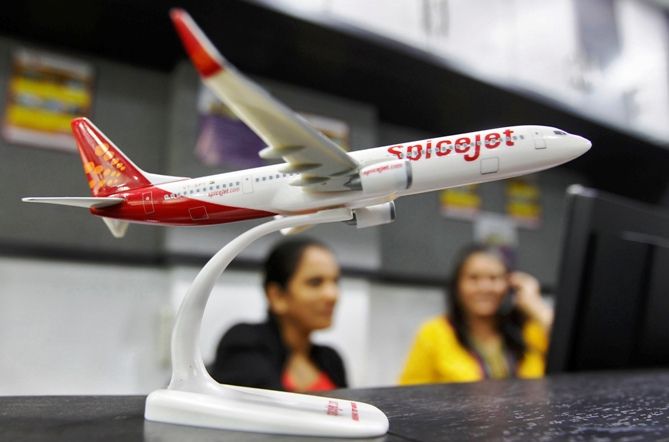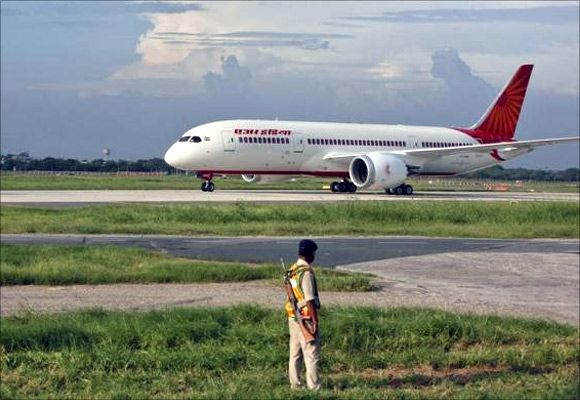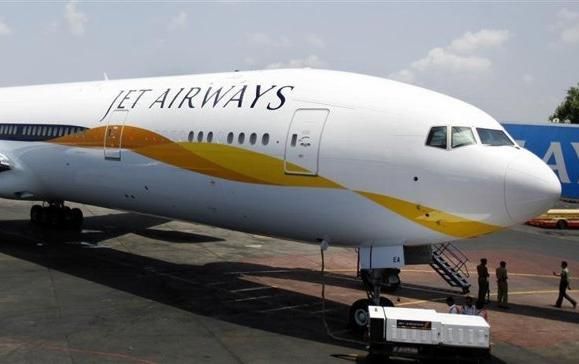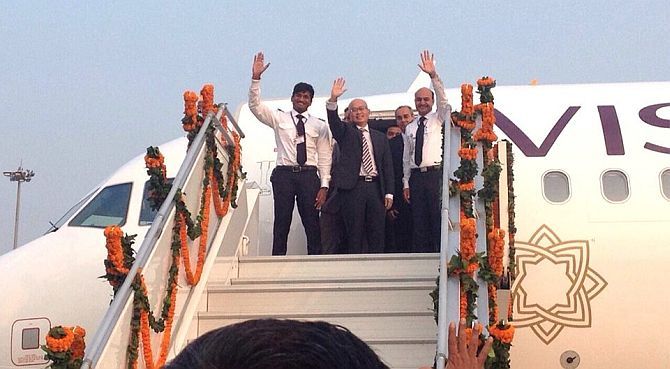 | « Back to article | Print this article |
The change in political leadership brought much hope for the aviation sector, which was for long seeking attention of decision-makers to address issues like infrastructure, high taxes and costs.

SpiceJet's near-shutdown and the downgrade of India's safety ranking marred the civil aviation sector in 2014.
The sector, however, saw a new airline taking to the sky and another one readying itself to do so early next year.
National carrier Air India became part of the 27-member global airlines grouping Star Alliance, as budget airline AirAsia India launched operations and Tata-SIA joint venture carrier Vistara received the flying permit and announced its intentions to start operations from January 9.
Jet Airways also completed 24 per cent stake sale to Abu Dhabi carrier Etihad for Rs 2,058 crore (Rs 20.58 billion).

A change of government saw incumbents Ashok Gajapathi Raju and Mahesh Sharma in the cockpit of the Civil Aviation Ministry, which came out with a long-awaited draft policy for the entire sector emphasising on air connectivity to remote places.
It is currently under discussion among stakeholders.
After suffering a full closure for almost a day, SpiceJet averted a shutdown as it attracted new investment from one of its founders, Ajay Singh, who along with US-based JP Morgan Chase are expected to pump in $200 million to pick up stake from current promoter Kalanithi Maran and his Sun Group.
While there was no major mishap during the year, a SpiceJet flight, carrying 140 passengers, had a close shave when a buffalo came on the runway at Surat airport and hit it, forcing the pilot to abort take-off.

This led aviation regulator DGCA to take preventive measures at 18 identified airports to prevent such recurrence.
The year began on a negative note as US Federal Aviation Administration downgraded India's aviation safety ranking from top category-I to category-II, bringing it below Pakistan and on par with countries like Ghana, Barbados and Bangladesh on January 31.
The ranking is likely to remain grounded till March next year as the FAA carried out its audit this month and found that several deficiencies are yet to be rectified.
The change in political leadership brought much hope for the aviation sector, which was for long seeking attention of decision-makers to address issues like infrastructure, high taxes and costs.

No decision was taken to curtail taxes on jet fuel which comprises 40-45 per cent of an airline's operational costs, while the industry's long-pending demand for abolition of the rule that allows a domestic carrier to fly abroad only after five years of domestic operations and a 20-aircraft fleet, also remained unfulfilled.
This was in spite of both previous and the present dispensations favouring doing away with the norm on several occasions.
For the airline sector, the year was a mixed bag with Malaysian no-frills carrier AirAsia's Indian subsidiary AirAsia India taking off with its first flight on June 12, making it the fourth Indian budget carrier after IndiGo, SpiceJet and GoAir.
Naresh Goyal-promoted Jet Airways completed transaction of 24 per cent stake sale for Rs 2,058 crore and offloading of 51 per cent holding for $150 million respectively to the Gulf carrier Etihad.

Faced with a series of losses, Jet switched over to single-brand business model, phasing out its low-cost subsidiary JetLite from early December.
The airline also saw the exit of two top officials besides several other senior executives in quick successions during the year before finally getting former Air Seychelles chief executive Cramer Ball at the helm.
Tata-Singapore Airlines' joint venture full service carrier Vistara announced launching of its flight services from January 9 soon after it received Air Operator Permit from the Directorate General of Civil Aviation, which was earlier held up due to some regulatory issues.
During the year, Rahul Bhatia-promoted IndiGo maintained its numero uno position in terms of market share and placed order for 25O Airbus A-320 Neo planes for $25.5 billion.
It also completed its 2005 order of 100 A320s with the Airbus, taking the 100th aircraft delivery in November.
Besides, the carrier also revived plan to raise $400 million from the capital market.